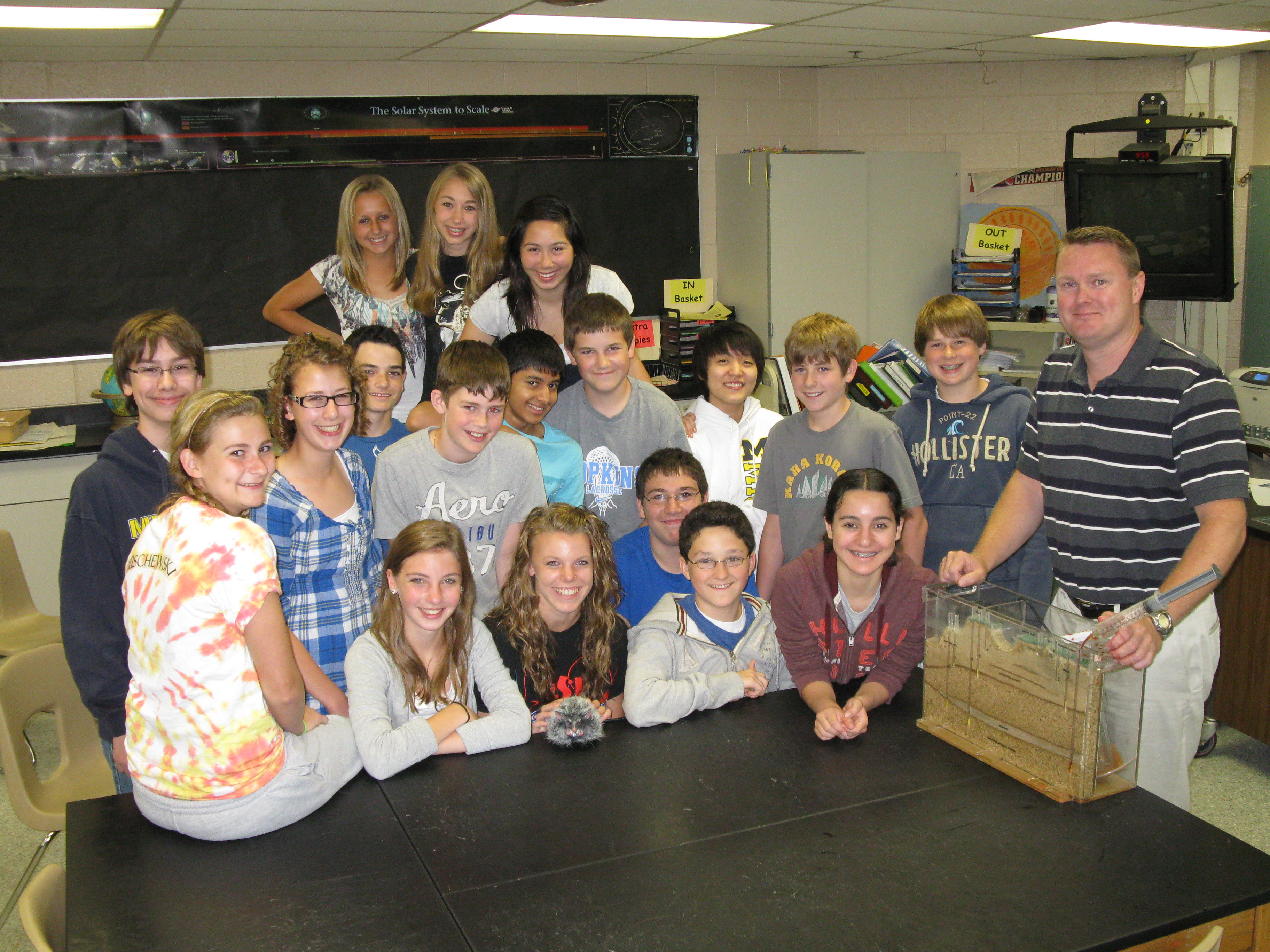
Ed. Note: On Monday, President Obama announced the winners of the 2009 Presidential Award for Excellence in Mathematics and Science Teaching. This year the award was given to 103 math and science teachers from across the country teaching 7th through 12th graders. Nate Childers, a science teacher at Hart Middle School in Rochester, Michigan is one of the recipients of the award.
Wow, what a feeling! I never would have guessed 20 years ago that I would be awarded the Presidential Award for Excellence in Mathematics and Science Teaching. At that time, I was working on a marketing degree and working for General Motors. After realizing that the corporate environment wasn’t for me and having a chance interaction with my old high school principal, I decided to pursue a career in education. It’s the best decision I ever made.
I love teaching because I can make science come alive in students' lives. In my classroom, I use real-world scenarios to engage students:
- In “Quakeville,” students are part of an architectural team trying to learn about a city's seismic activity and then designing and constructing a building for the city at the site they proposed.
- In “Handling a Hurricane,” students are community members in a city with an approaching hurricane. They must track the hurricane, make decisions about evacuation and also design and construct a house that can withstand hurricane force winds.
The tragic events around the world this year have brought a new level of relevance to the topics we study. For example, the earthquake in Haiti hit as we were studying plate tectonics. I put together a presentation and brought together students from other science classes to show the students the events that led to the destruction. The Icelandic volcanic eruption occurred after my students learned about volcanoes and during their study of climate. Now, there is the oil spill in the Gulf of Mexico. Even though the full extent of the impact on marine life and the environment will not be known for some time, I have used the opportunity to help students see how interacting earth systems are impacted by human activities.
My classes also do real-world science: since 1994, my students have monitored chemical and biological indicators at a local stream. They compile and analyze trends from the collected data in order to draw conclusions about the health of the stream. This data is sent to our local watershed council and is used by local and state officials to make land use decisions. In fact, after uncovering a problem at our monitoring site in 1999, the state issued a cease and desist order to a construction site until proper erosion control measures were put in place. It was very empowering for students to see that they can make a difference in their community through science.
I find that bringing media and technology into the classroom is another way to grab students’ attention and improve learning. For example, I use an interactive whiteboard daily to present information, show video clips, and compile class data for analysis. I also use electronic student response systems to assess student understanding quickly and then tailor instruction to their needs. Being aware of new tools that are available and not being afraid to try them in the classroom has really improved my students’ experience.
I constantly search for technology that will enhance what the students are learning, and am on an endless quest for new ways to teach challenging concepts and help science come alive for my students. I am never satisfied and always strive to make things better, more relevant, and more engaging.
Many tremendous people have helped me mature into a confident teacher over the years: my middle school and high school principal, Gary Doyle, motivated me to become a teacher years after I graduated; I still hear Dan Hickey’s wise advice 15 years after he hired me; and - most importantly - my wife, also a teacher, constantly offers great ideas, advice, and support. For any new teachers out there, I’d offer two bits of advice that have helped me: surround yourself with positive people and whenever you are making a decision, choose what is best for the student.
I have been blessed to work at a great school with very motivated, hard working people. They inspire me every day to do more for students, for our school, and for our profession. I am honored and humbled by this recognition, and I only hope that all teachers get the recognition and respect they deserve.
Nate Childers is a science teacher at Hart Middle School in Rochester, Michigan.


